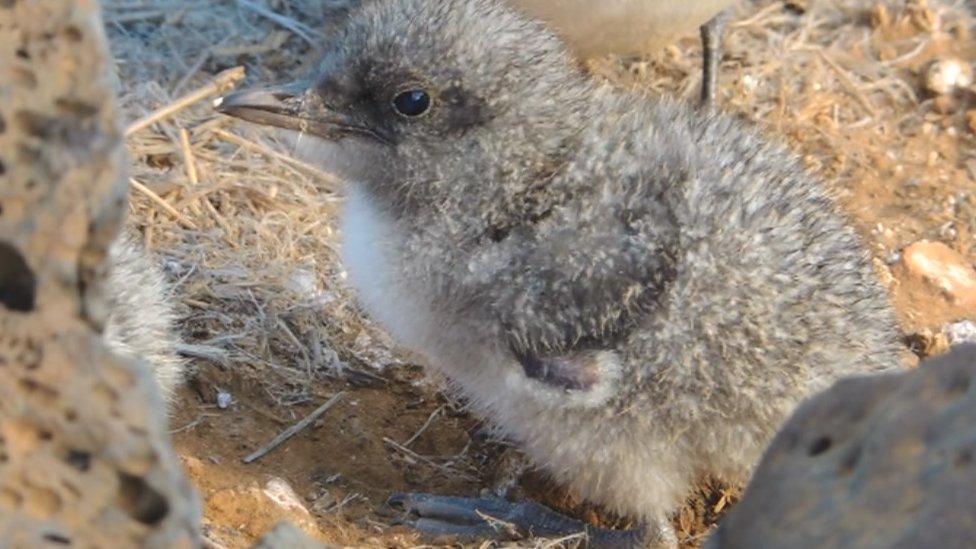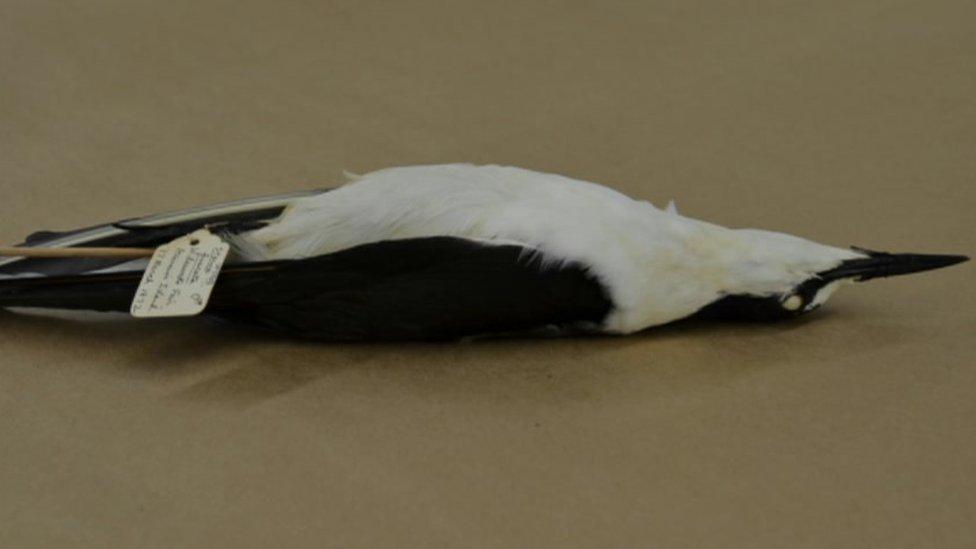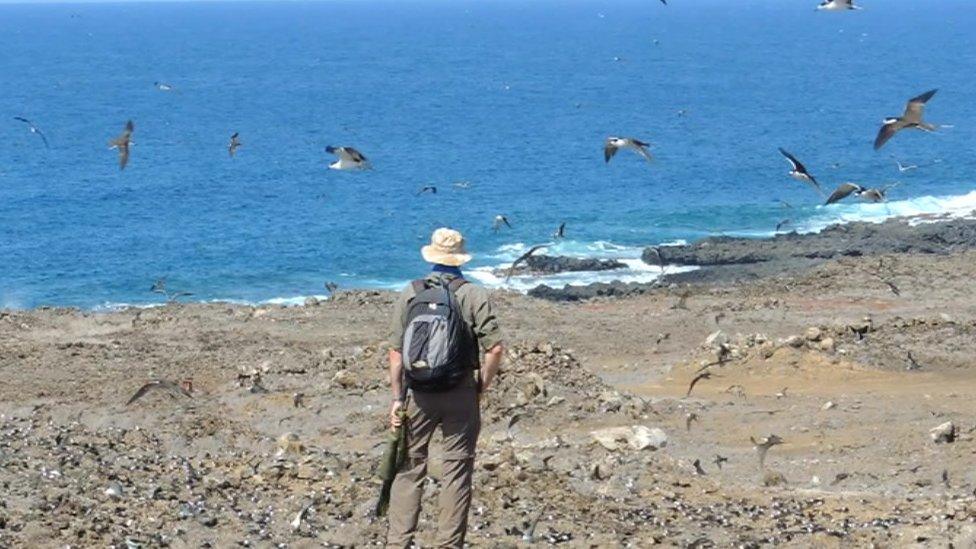Sooty terns: A squid diet causes population problems for sea birds
- Published

A sooty tern chick on Ascension
University of Birmingham scientists have cracked a wildlife mystery - a mysterious population crash in seabird numbers on Ascension Island in the Atlantic.
Once there were millions of sooty terns on Ascension now there are just a few hundred thousand.
But comparing feathers from living birds to museum specimens reveals big changes in the birds' diet and researchers say that's behind the stark decline in numbers.
The discovery has big implications for the health of our oceans.
The key to this research, external is to compare the diet of modern sooty terns with historical records.
Collecting samples of food from today's birds is pretty easy.
Around one in eight terns will throw up on you as a defence mechanism if you pick them up.
Since the team from the University of Birmingham were ringing around 2,000 birds for another study that's plenty of opportunities to collect sooty tern stomach contents.
Oldest specimen
But how do you find historical records of the diet of sooty terns for comparison?
Museums don't have samples of tern lunches from 100 years ago.

A museum specimen used in the research, the oldest was more than 100 years old
But museums do have sooty terns themselves.
The oldest specimen is in a museum in Newcastle-upon-Tyne and was collected on Ascension in 1888.
Most of the birds are to be found in American museums.
So researcher Dr Jim Reynolds went on a trek to track down 180 sooty tern specimens.
From each he would extra a few feathers which were sent for analysis, in particular the team was interested in levels of carbon and nitrogen isotopes.
From these levels it is possible to reconstruct the diet of the museum birds and compare that will the modern lunch samples. And all this work revealed a radical change.
Until 1940 the birds feasted on nutritious small fish but from the 1970s onwards their diet is dominated by nutritionally poor squid instead. This change coincides with the population crash.
Halt the decline
This discovery does tally with what the researchers noticed on the ground.
When handling the birds they had expected half-digested fish to be regurgitated on them, instead it was half-digested squid.
Seabirds like the sooty tern are long-lived, far ranging and so a brilliant barometer of the health of the oceans.

There are hundreds of thousands of sooty terns on Ascension but there used to be millions
This discovery explains why despite conservation efforts, external on Ascension island itself numbers of sooty terns have failed to recover.
Climate change and human activity are likely culprits in all this.
Squid thrive in warmer waters so there may be more of them for the birds to eat.
While the traditional food of small fish could be missing because they are usually driven to the surface by tuna and we've caught and eaten rather a lot of those.
This nifty study shows existing conservation efforts focused on Ascension may not be enough on their own to halt this decline.
When it comes to marine wildlife conservation we may need to think a lot bigger.